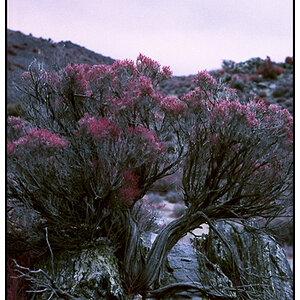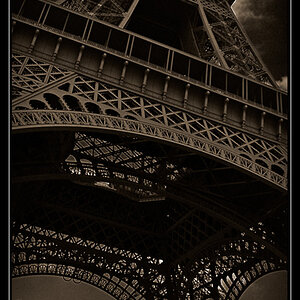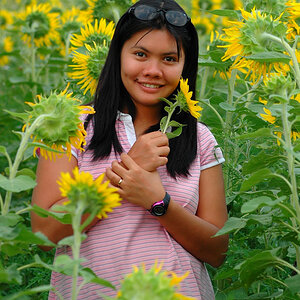Actor
TPF Noob!
- Joined
- Mar 4, 2007
- Messages
- 421
- Reaction score
- 1
- Location
- Ohio
- Can others edit my Photos
- Photos NOT OK to edit
incident light vs. reflected light
Incident light refers to light which falls on the subject. Reflected light refers to light reflected by the subject. In measuring incident light the meter is held near the subject and the light sensitive element is covered with a small dome which attenuates the light. The meter is pointed at the camera and a reading is taken. Reflected light is read by a meter held near the camera (without the attenuating dome) or by an in-camera meter. The meter (or camera) is pointed at the subject and the reading is taken.
inverse square law
Mathematically
I = I/(d d)^2
where I is the intensity of the light at distance d and I is the intensity of the light at distance d, both distances being measured from the source of the light. ^ means to the power of and ^2 means to the second power or squared. An example in less mathematical terms is if you double the distance from a light to the subject you will decrease the illumination by a factor of 4 (2^2 = 4).
ISO
Abbreviation for International Standards Organization. To photographers ISO is a notation of film speed in both ASA and DIN, i.e., if the ASA is 100, then DIN is 21 and ISO 100/21 is written on the box. See ASA, DIN.
large format
Any format larger than 70mm, in particular 4 x 5 sheet film or larger.
latent image
An image formed on the emulsion when light strikes the film and which must be developed to become visible.
leader
A paper (or other non-light sensitive material) attachment, which is the same width as roll film, which allows the film to be loaded into a camera without having to load the camera in the dark. In some instances (120 film) the leader is a backing which extends the full length of the film and beyond both ends. In other cases (220 film) the leader is only attached to the ends. In still other cases (movie film) the film is self leading and the ends of the film are simply sacrificed. Self leading depends on the film attenuating the light enough that several layers will protect the inner layers of the spool from exposure.
leaf shutter
A shutter designed like an iris. Such a shutter exposes all areas of the negative simultaneously, unlike a focal plane shutter. Leaf shutter usually reside in the lens and are common in medium format and large format photography.
loupe
A magnifier for examining a negative, transparency or print at very close distance.
Incident light refers to light which falls on the subject. Reflected light refers to light reflected by the subject. In measuring incident light the meter is held near the subject and the light sensitive element is covered with a small dome which attenuates the light. The meter is pointed at the camera and a reading is taken. Reflected light is read by a meter held near the camera (without the attenuating dome) or by an in-camera meter. The meter (or camera) is pointed at the subject and the reading is taken.
inverse square law
Mathematically
I = I/(d d)^2
where I is the intensity of the light at distance d and I is the intensity of the light at distance d, both distances being measured from the source of the light. ^ means to the power of and ^2 means to the second power or squared. An example in less mathematical terms is if you double the distance from a light to the subject you will decrease the illumination by a factor of 4 (2^2 = 4).
ISO
Abbreviation for International Standards Organization. To photographers ISO is a notation of film speed in both ASA and DIN, i.e., if the ASA is 100, then DIN is 21 and ISO 100/21 is written on the box. See ASA, DIN.
large format
Any format larger than 70mm, in particular 4 x 5 sheet film or larger.
latent image
An image formed on the emulsion when light strikes the film and which must be developed to become visible.
leader
A paper (or other non-light sensitive material) attachment, which is the same width as roll film, which allows the film to be loaded into a camera without having to load the camera in the dark. In some instances (120 film) the leader is a backing which extends the full length of the film and beyond both ends. In other cases (220 film) the leader is only attached to the ends. In still other cases (movie film) the film is self leading and the ends of the film are simply sacrificed. Self leading depends on the film attenuating the light enough that several layers will protect the inner layers of the spool from exposure.
leaf shutter
A shutter designed like an iris. Such a shutter exposes all areas of the negative simultaneously, unlike a focal plane shutter. Leaf shutter usually reside in the lens and are common in medium format and large format photography.
loupe
A magnifier for examining a negative, transparency or print at very close distance.


 i feel dumb.
i feel dumb. ![[No title]](/data/xfmg/thumbnail/36/36302-6ee4929dfdf80290ffd73704693e860f.jpg?1619737496)
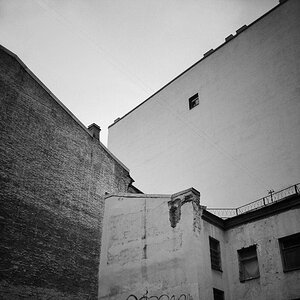
![[No title]](/data/xfmg/thumbnail/36/36301-27972c0474532c2ef657014362950733.jpg?1619737495)
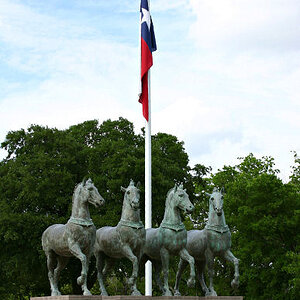
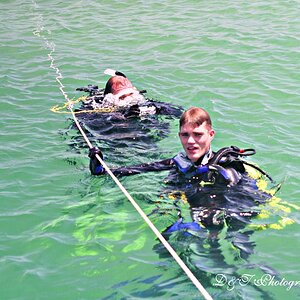
![[No title]](/data/xfmg/thumbnail/39/39289-c5ea6a611707fdd5786347f4a67d63ae.jpg?1619738957)
